Jesse Ziegler | November 16, 2019
Is it WORCS Worthy and XC-ready? We went to Washington to find out.
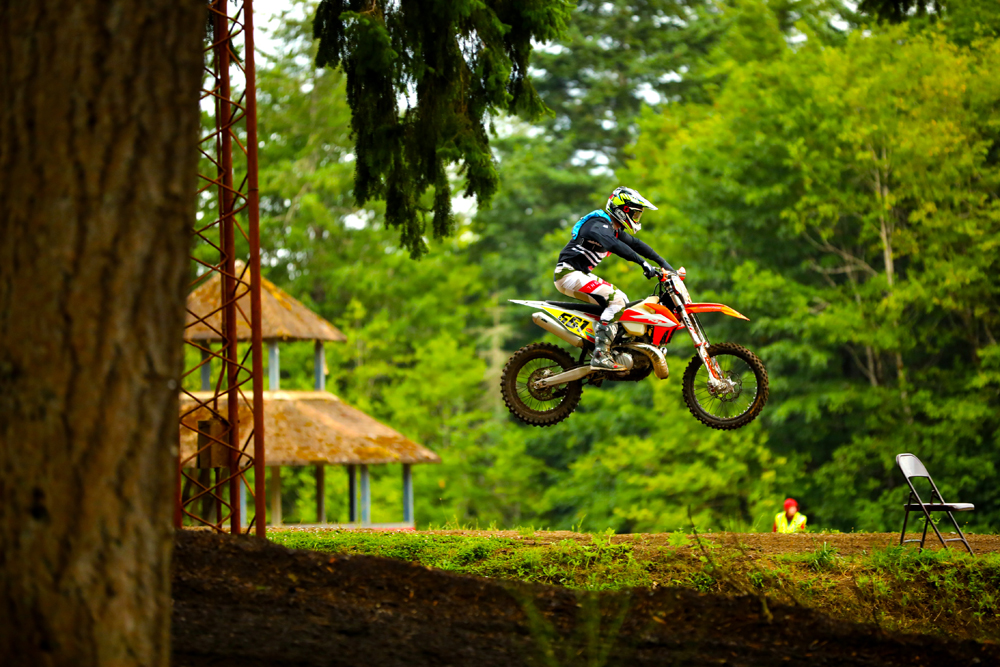
Photos by Harlen Foley and Cole Kirkpatrick
Are you wondering if KTM’s fuel-injection technology is ready for its most competitive line of off-road motorcycles? So are we! We went to the WORCS event held in Washington this summer to find out if TPI is WORCS worthy and XC-ready.
Before we get too deep into the fuel-injection here, it’s worth calling out some standout features that make the 2020 KTM XC TPI what it is. This isn’t a complete list of everything new, but just the highlights of what we appreciate the most.
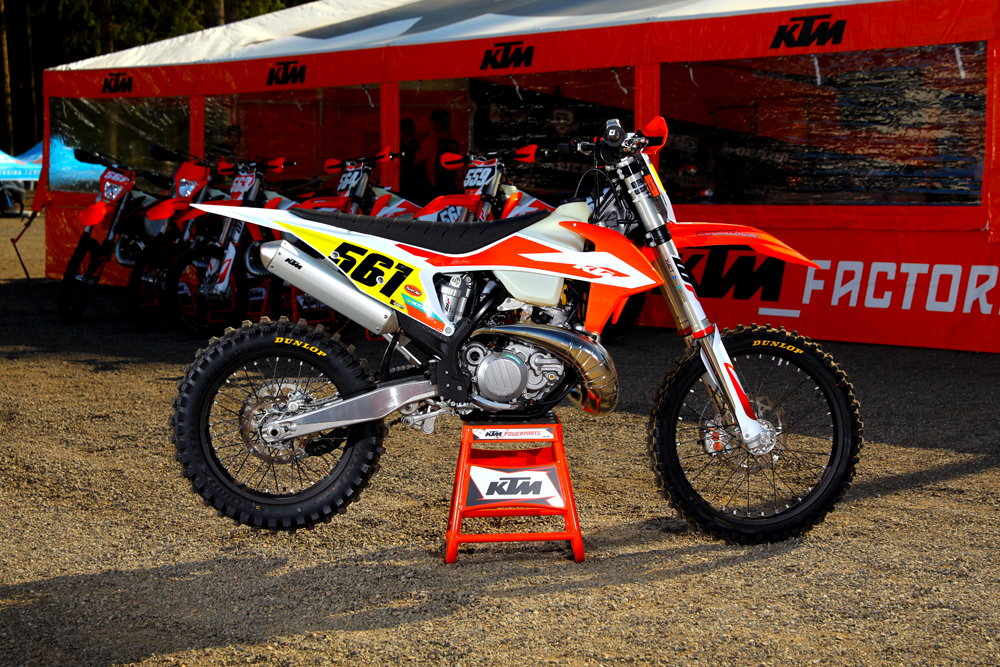 After satisfied with the success on the more trail-orientated KTM XC-W, fuel injection has found its way onto the more race-designed XC models, like the 250 XC TPI we rode here in a WORCS race in Washington.
After satisfied with the success on the more trail-orientated KTM XC-W, fuel injection has found its way onto the more race-designed XC models, like the 250 XC TPI we rode here in a WORCS race in Washington.
Across the board, the updates to the latest generation of XC-models are great. From the visually obvious graphics and exhaust system updates to the suspension settings, the 2020 lineup is ultra-solid.
A lot of questions come up about the exhaust, and it’s truly unique. KTM stamps the 3D pattern into the pipe in-house, claiming it increases the strength of the structure and reduces noise. More impressive to us is the new shape of the system—now more oval as it exits the engine—and its higher ground clearance for those annoying rocks and logs we inevitably lodge into.
The engine gets updates outside TPI, as well. Exhaust port machining dials in timing and new higher compression cylinder head are on-board.
The oil system gets some updates to the pump and mounting to make it more durable and impermeable to dirt. It’s important to note how efficient the oil system is in conjunction with TPI. The 0.7-liter tank is good for about five fuel tanks of gas, and that’s a lot of riding. It manages this by averaging the fuel: oil ratio to an astounding 80:1.
Finally, KTM added a new ambient air pressure sensor to aid in altitude compensation via the ECU. As we’ll discuss later, the mapping on TPI bikes has been updated regularly over the years. This new TPI system sensor on the XC should keep the system up-to-speed on adjustments. However, as we keep learning with TPI technology, the journey is far from over.
Also, as a forward conversation, the complete family of KTM two-strokes is great. Their counter-balanced engines are impeccably smooth and comfortable, and the componentry is top-notch as it has been for years. This is the leading edge of two-stroke development. If you’re in the market, this is where your interest should likely start.
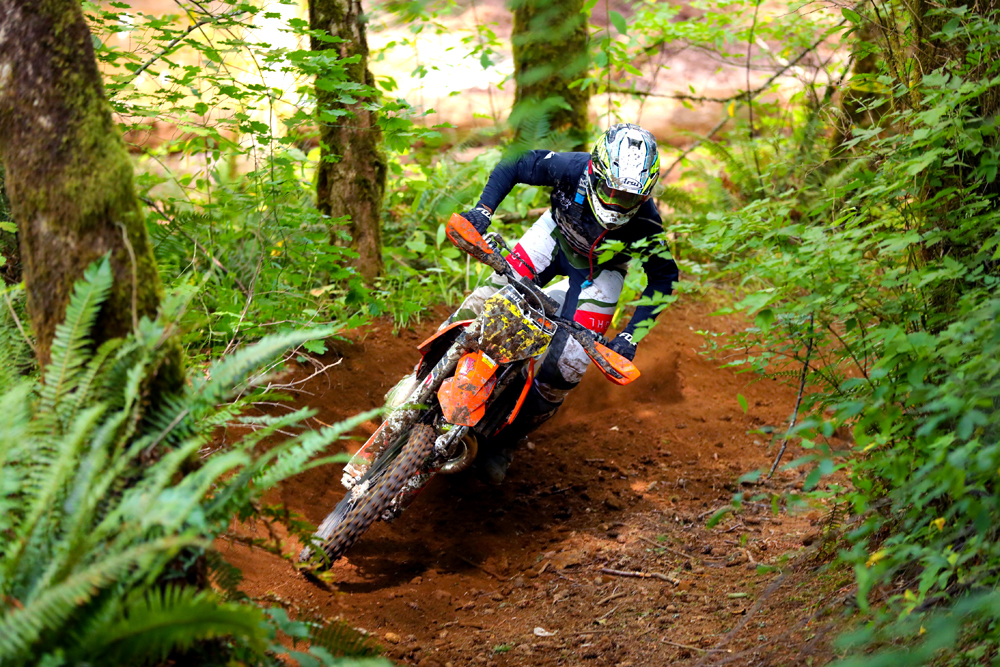 There are a number of advantages when it comes to EFI, especially on a two-stroke, but spot-on throttle response is high on the list.
There are a number of advantages when it comes to EFI, especially on a two-stroke, but spot-on throttle response is high on the list.
TPI Timeline
We’ve been riding fuel-injected two strokes from Austria since 2017 and XC’s in general for a lot longer than that. For us, our TPI journey started with the Husqvarna TE250i—a pre-production bike we wrangled from Husqvarna to take to the mountains.
Next were the KTM TPI models—all in the XC-W range of wide-ratio, single-track-minded enduro bikes with softer suspension and the like. But what we’ve really been waiting for is this technology to make its way to the fastest off-road bikes in the bunch—the XC Line.
Why? Because we love XC’s and everything they represent. And we’re weird in the fact that a lot of us like 250s better than 300s. We desperately want the TPI tech to replicate the finely tuned carbureted two-stroke versions we’ve tested and owned in the past. Bluntly put, we want to see if TPI can deliver the punch to be competitive in an XC world.
Up to this point, our experience with TPI has been impressive, but not exactly exciting. Easy to love, yes! Easy to never want to go back to mixing gas because of EFI, yep! Exciting, not really (except for the reasons mentioned previously). The only time TPI has really let us down is on startup, it sometimes acts if a choke is on until the engine reaches operating temps.
The TPI system delivers fuel efficiently to the two-stroke system and delivers broad, smooth power across an insane range of elevation and temperature. Its best power range in the 250 platform is mid to top with ultra-clean, and worry-free cable pulls on-call. The machines with TPI simply sing a consistent tune to the moon from open desert, sand dunes, and more. Likewise, they grunt up anything, are massively consistent, and rarely require oil tank refills. But it’s sort of boring, missing a bit of grunt and/or pop as you begin to accelerate like properly tuned carbureted bikes of the past delivered.
This mellowness is a welcome characteristic above 9000 feet in the Rocky Mountains when your bike can crawl to the lowest possible rpm without stalling. Also, the mellow nature of the TPI power delivery is a traction hog. But when we’re sitting on a starting line, you may want a more aggressive attitude. We’re looking for the two-stroke surge to make a pass before heading back into the trees here. After all, that’s what XC-style racing is all about.
VIDEO | 2020 KTM 250 XC TPI Review
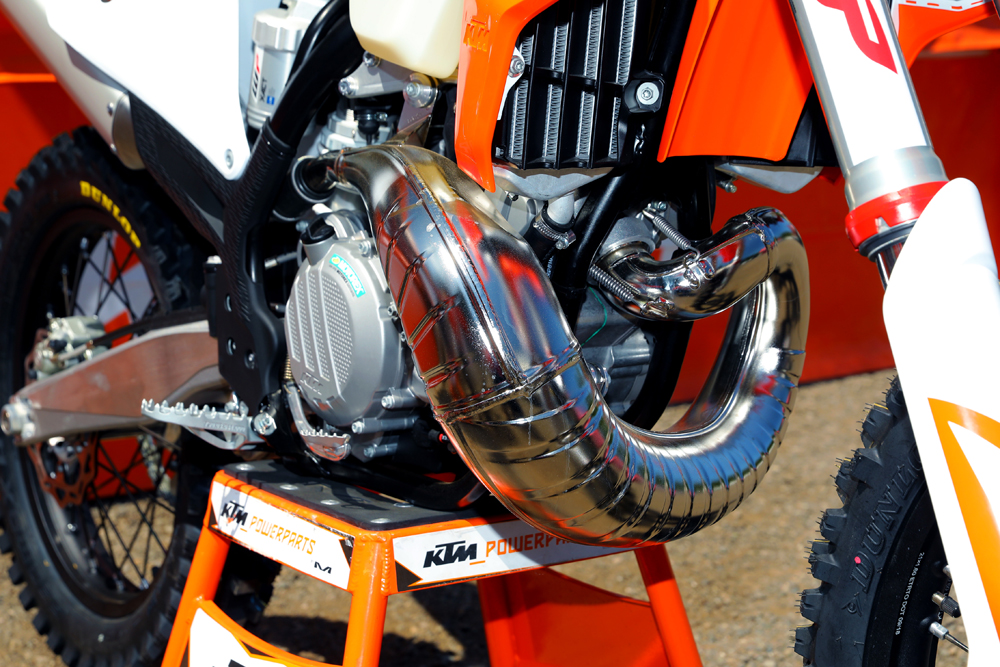 The XC two-stroke range received many other updates besides EFI, including an all-new exhaust design.
The XC two-stroke range received many other updates besides EFI, including an all-new exhaust design.
As far as do-it-all competition dirt bikes go, few can match the pedigree of KTM’s XC line. The pleasant blend of its aggressive, track-bred platform, and intelligently selected off-road-specific settings and componentry have historically made these bikes the perfect choice for factory racers and weekend warriors alike.
This entire class of KTM machinery is designed for closed-course, open-throttle competition like WORCS, GNCC, hare scrambles of any sort, and grand prix events. And, if you’re just a trail donkey looking for some fun with a little more attitude than an XC-W, they work there, too. Same goes for you track day weekend warriors—grab an XC and enjoy moto laps. It’ll do it nearly as well as any MX-specific machine can.
XC’s are, in a lot of ways, off-road perfection.
To continue this legacy, TPI needs to come into the XC line, swinging a bit more for the fences than the trail-focused predecessors. These can’t simply be XC-W’s with linkage and closer transmission ratios.
Unfortunately for those of us looking for a new world of TPI with the XC lineup, that’s not the case just yet. Out of the box, the 2020 KTM 250 XC TPI has the exact same motor setup and engine mapping settings as the 2020 250 XC-W TPI. The only difference between the two classes of bikes at the moment is with suspension/swingarm (XC-W’s don’t have linkage and run WP’s XPLOR suspension components), headlights (XC-W’s have lights) and transmission gear ratios (XC-W’s are full wide-ratio where XC’s are semi-wide ratio). That’s about it. When you twist the throttle, the fuel mapping, and power delivery (gearing dependent) will be the same.
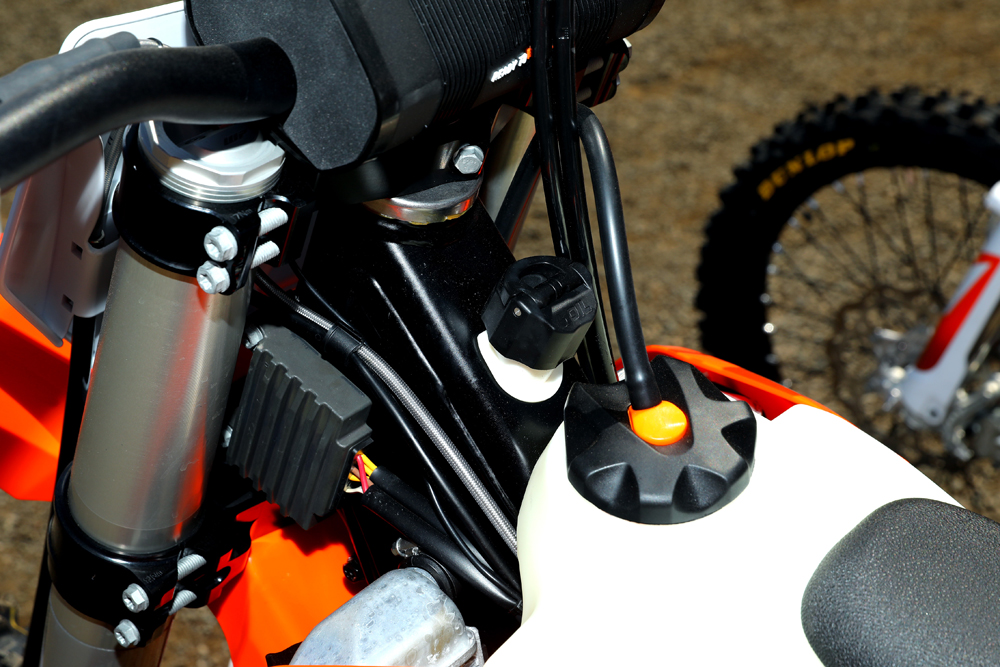 EFI means never having to mix oil with full, just remove the oil-filler cap, fill it up, and you’re done.
EFI means never having to mix oil with full, just remove the oil-filler cap, fill it up, and you’re done.
It’s mellow, clean and sporty with an attraction to traction, but it is missing the more serious pull-when-needed response an ultra-competitive-class two-stroke requires at times—like at the start of a race.
What we expected with TPI in the XC line was more in-line with KTM’s four-stroke models. We thought it’d be different than its mellower brothers.
If you compare a KTM 350 SX-F to 350 XC and 350 XCF-W (or 350 EXC), you’re going to get very distinctive bikes. The SX-F and the XC will be very close, with the XCF-W (or EXC, for that matter) being clearly geared towards the trail segment in suspension, chassis, and engine character.
With the 250 XC TPI and 250 XC-W TPI, the bikes are much closer, and the engine character is identical. While suspension and chassis attitude differences are still wide, and the transmission ratios have a significant effect on where the bike will shine, the bikes really do feel very close at the throttle at trail pace and in racing situations. But right now, if you’re choosing between XC and XC-W, you’re only choosing a suspension and transmission option, the engines are the same.
(We actually raced a 250 XC-W TPI after this and will have more on this in an upcoming issue.)
KTM’s TPI is still in its infancy in the grand scheme of things. And we have no doubt they will sort maps out to fit what the racing culture and consumer base demands or expects. In fact, we’ve seen and heard of multiple map updates rolling into the TPI platform since our initial ride in 2017—we hoped for more. And even today, there’s an update.
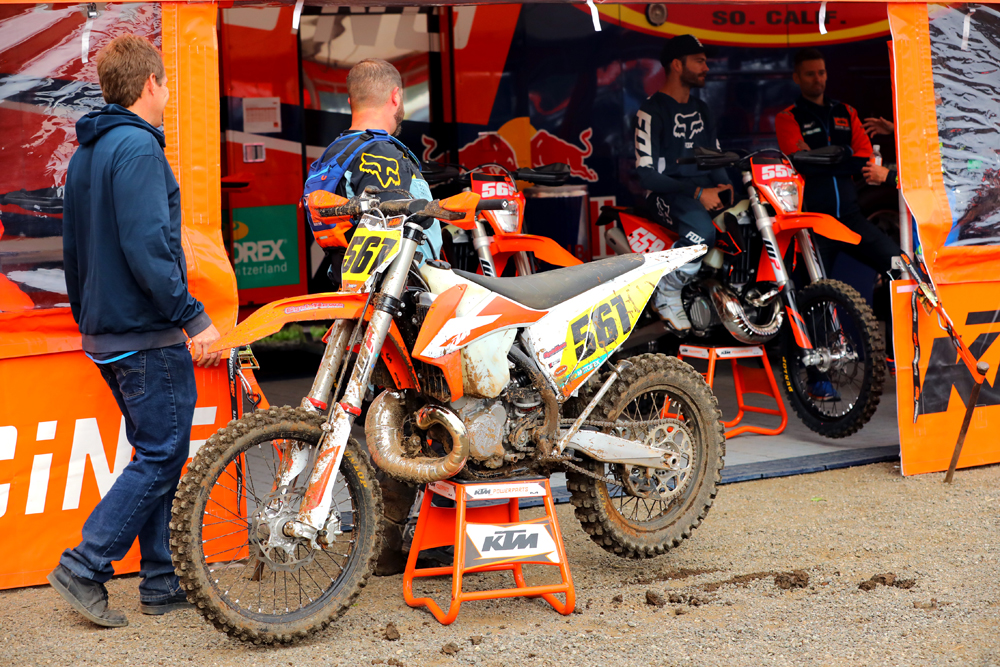 KTM has thoroughly tested its EFI system on the factory race bike, now it’s available on some of its production off-road bikes, like the XC-W and XC 250 and 300 models.
KTM has thoroughly tested its EFI system on the factory race bike, now it’s available on some of its production off-road bikes, like the XC-W and XC 250 and 300 models.
As of press time, KTM has developed a new map as a running updated available for all TPI models (not specific to the XC line). KTM Dealers have the updated maps and can flash the ECU in your TPI model to the latest version. The cost, if any, to perform this service is to be determined by your dealer. Now, KTM is pretty discreet with what the updated map’s intention is, and their official explanation is that the R&D team was looking for, “…even faster altitude compensation.” This is likely in response to reports of slower altitude compensating where riders are covering severe vertical feet non-stop in big trail days. There is no mention of it improving bottom end or introducing some pep to the performance on the bikes. However, we raced the aforementioned 250 XC-W TPI at the Ohio National Enduro, and that bike felt significantly different. We highly recommend asking your dealer for the update.
The final big question mark in TPI tuning (before going with aftermarket exhaust and other engine mods) comes down to the almighty power-valve. For over a decade, the adjustable power-valve on KTM’s two-strokes has been an effective tuning tool to manipulate power delivery. From fire-breathing snap monsters to creeping and crawling grunt machines, the power-valve (and sometimes necessary jetting changes) can drastically affect the output as desired. For now, KTM is hesitant to comment on the effectiveness of power-valve adjustments on the TPI models.
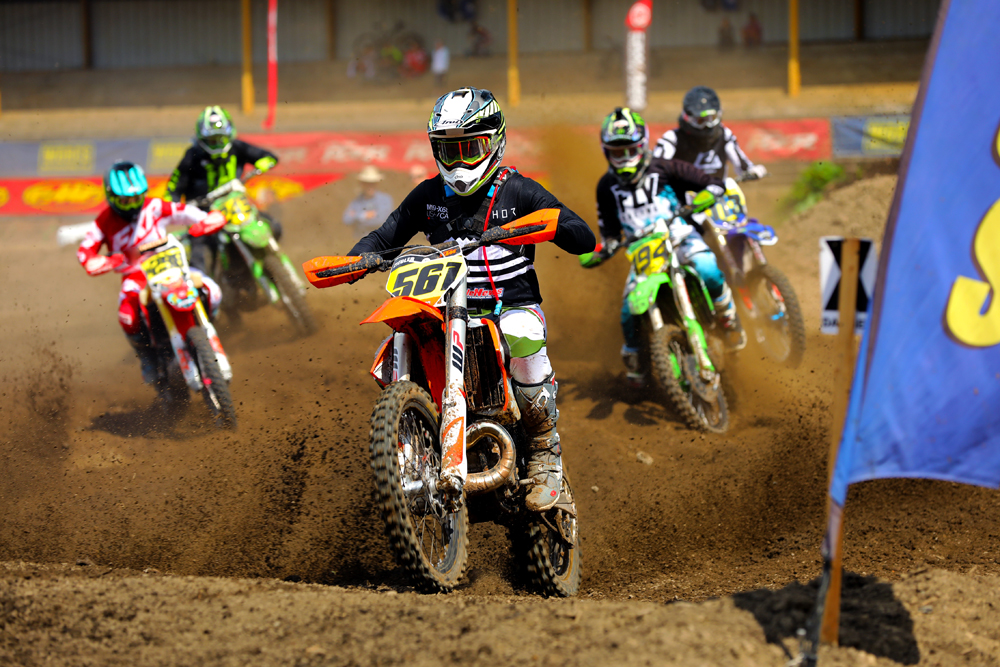 Compared to the XC-W in the suspension department, the XC has higher-end components and linkage rear suspension.
Compared to the XC-W in the suspension department, the XC has higher-end components and linkage rear suspension.
We’re not that hesitant. We’ve made power-valve adjustments on almost every TPI bike we’ve tested, and we’ve felt it makes a difference. We’re not entirely sure how the TPI system reacts to make this change as effective as possible like jetting a carb would do, but we’ve done it, and the changes were noticeable—most recently during our enduro test.
If it sounds like I’m a little harsh on the XC TPI, it’s probably because I’m personally attached to this model. I’ve been in a decade-long personal relationship with KTM 250 XCs. We even moved in together.
It started during my time at Dirt Rider Magazine, with Jimmy Lewis re-introducing me to the two-stroke goods and the beauty of the do-it-all XC platform. I had left two-strokes in the dust as I chased motocross laps aboard thumpers. One day, on Lewis’ suggestion, I grabbed the 250 XC, and my eyes were opened once again. Manageable-yet-strong power from a 250cc two-stroke doesn’t make a whole lot of sense, but that’s what the XC is all about. It has the goods and delivers them with manners as you tune.
From that day forward, I commandeered many a 250 XC ride, stealing our in-house test mule for a rowdy road trip through Idaho’s backcountry and into a national enduro in my home state of Montana. After leaving the motorcycle media world for a while, the first thing I did was purchase a 2010 KTM 250 XC and use it as a trail-slaying tool across Idaho’s best terrain. That bike lived in my apartment’s living room for a couple months. I was totally cool with that.
While I’ve moved on from cohabiting with motorcycles, I am still looking to get back into an adult relationship with a two-stroke. And as soon as TPI starts really delivering the goods I know it can with the XC, I’ll probably be ready to commit.CN
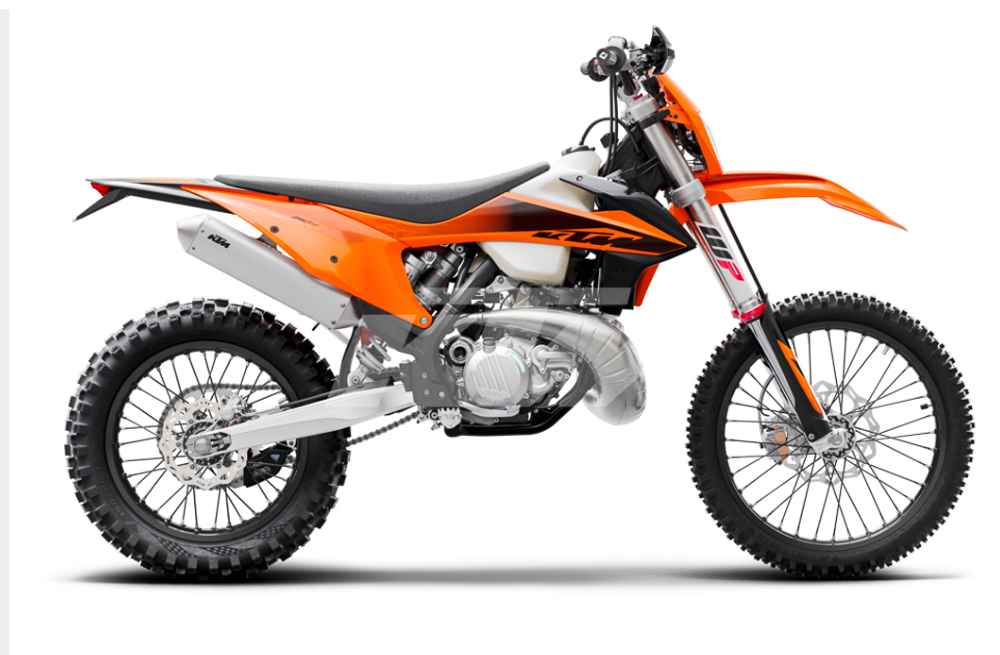
2020 KTM 250 XC TPI Specifications
| Engine Type: |
Liquid-cooled, 2-Stroke, single |
| Displacement: |
249cc |
| Bore / Stroke: |
66.4mm / 72mm |
| Starter: |
Electric Starter / 12.8V, 2Ah |
| Transmission: |
6-speed |
| Fuel System: |
TPI, Dell’Orto, 39mm throttle |
| Lubrication: |
Electronically Regulated Oil Pump |
| Primary Ratio: |
26:73 |
| Final Drive: |
13:51 |
| Clutch: |
Wet, multi-disc DDS-Clutch, Brembo hydraulics |
| Ignition: |
Continental EMS |
| Frame: |
Central double-cradle Type 25CrMo4 steel |
| Sub Frame: |
Aluminum |
| Handlebar: |
Neken, aluminum 28/22mm |
| Front Suspension: |
WP XACT USD fork, 48mm |
| Rear Suspension: |
WP XACT monoshock w/linkage |
| Front-wheel travel: |
12.2 in. |
| Rear-wheel travel: |
11.81 in. |
| Front brake: |
Single 260mm disc |
| Rear brake: |
Single 220mm disc |
| Front-wheel: |
1.60 x 21 in. |
| Rear-wheel: |
2.15 x 18 in. |
| Front tire: |
80/100 x 21 in. Dunlop AT81 |
| Rear tire: |
110/100 x 18 in. Dunlop AT81 |
| Rake: |
26.1º |
| Triple Clamp Offset: |
22mm |
| Wheelbase: |
58.5 ± 0.4 in. |
| Ground clearance: |
14.6 in. |
| Seat height: |
37.4 in. |
| Fuel capacity: |
2.25 gal. |
| Weight (dry, claimed): |
223.3 lbs. |
